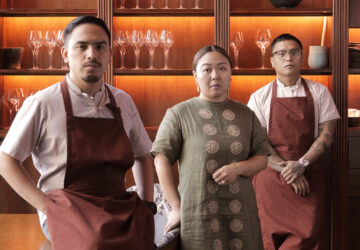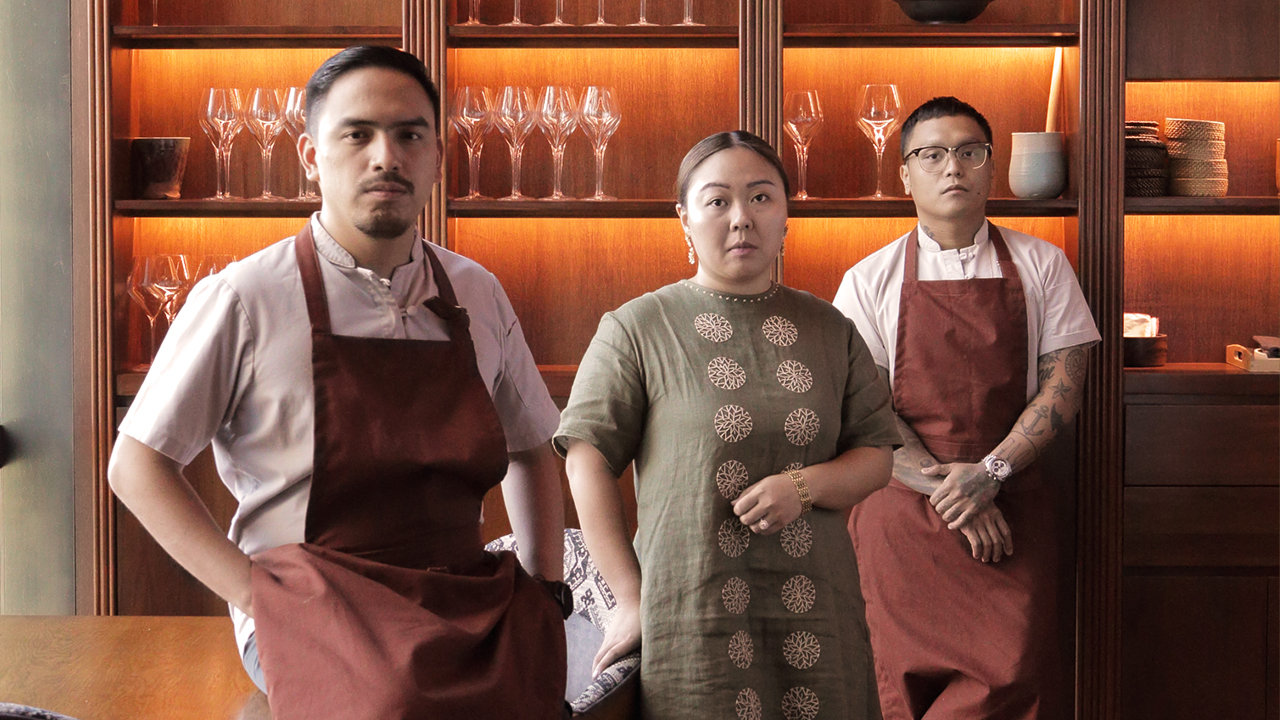In the culinary world, the family meal is a reflection of a restaurant’s values. As one answer to the question “but if they’re making the food, when do they eat?,” it’s the time when staff can relax and break bread with each other before launching into the chaos of the next shift.
A family meal usually sets the tone for a restaurant’s upcoming service. At Filipino restaurant Hapag and bar concept Ayà, owners Kevin “Nav” Navoa and Thirdy Dolatre deem it a sacred tradition.
Every day at 3 p.m., the staff of both establishments gather at the communal tables in Hapag’s main dining room to share a balanced meal of protein, vegetables, and starch prepared by one of the chefs. It’s a practice that Dolatre says strengthens the bond of their team and ensures they have the opportunity to communicate with each other.
“Intention” is the word that the chefs like to use when asked how their approach to the restaurant business has evolved since opening five years ago.
You’ll find a lot of mouthwatering photos of these meals dating back to 2019 on the @hapagfamilymeal Instagram—ranging from leveled up Pinoy breakfast food to Indian naan/butter chicken combos. Dolatre says it was originally created “just for fun” but as in-person dining was impossible during the pandemic, it was the takeaway menus and limited collaborations offered on the account that kept the restaurant afloat.
An intentional approach at Hapag and Ayà
Hapag takes its name from the Filipino term for dining table, a physical space where people meet to eat good food. The concept was borne from Navoa and Dolatre’s own household values, which is why it makes sense that this warm brand of hospitality has always been in its DNA.
When we visit the restaurant’s new location at Rockwell’s Balmori Suites a day before the official opening, everyone we encounter—from the staff, down to the chefs in the kitchen—makes sure to greet us with wide smiles. While the atmosphere is laid-back, there is a palpable excitement in the air as staff and chefs dressed in all black bustle about the expansive two-floor space.
“Intention” is the word that the chefs like to use when asked how their approach to the restaurant business has evolved since opening five years ago.
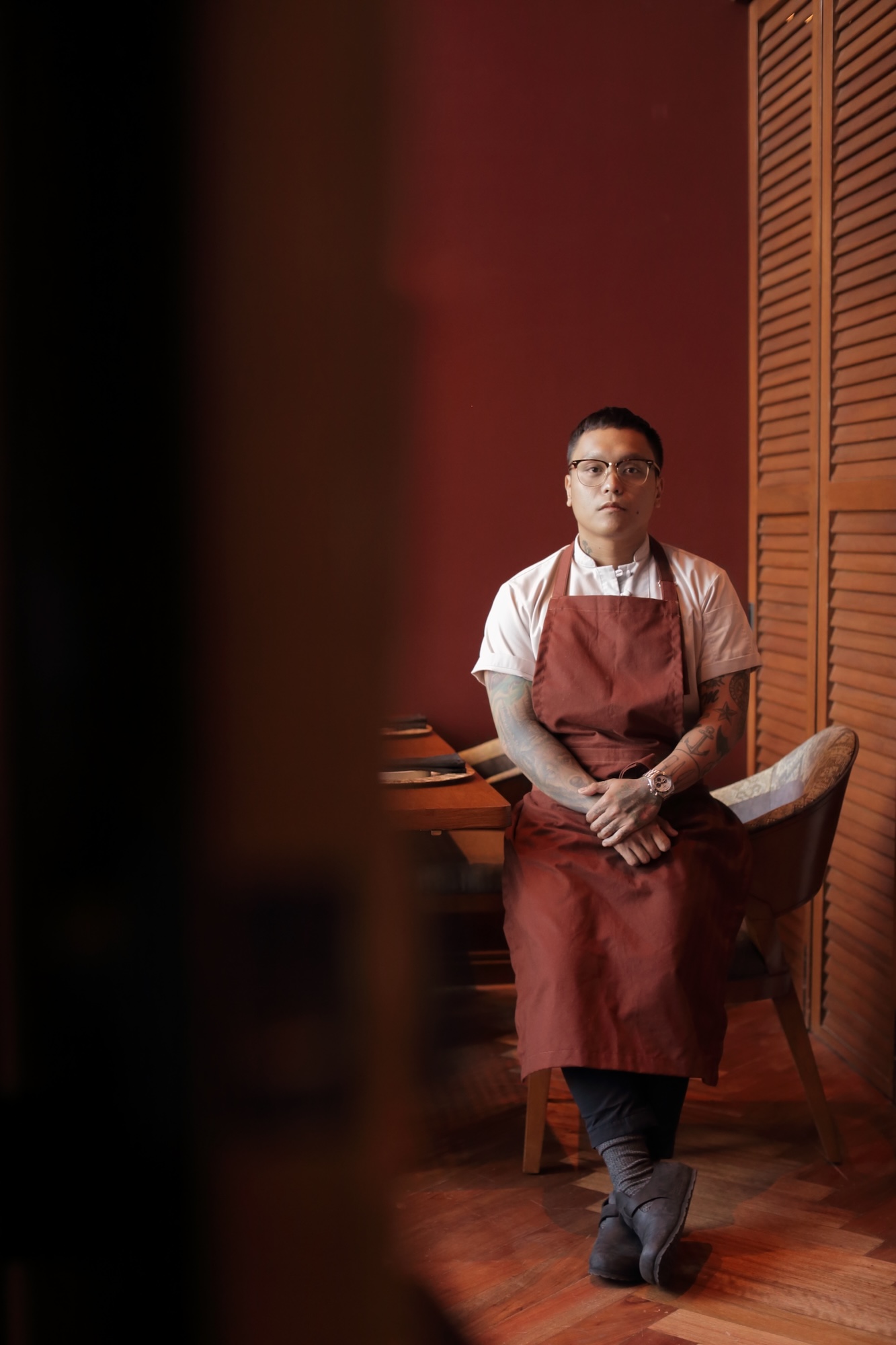
Coming from a 20-seater behind a lugawan along Katipunan (“House of Bulalugaw, to be exact”), Navoa shares that they didn’t have any lofty goals in the beginning. “At the start, we wanted to really just cook Filipino food our way,” he says, nostalgic. “It was a safe decision. It wasn’t too expensive to build, not too expensive to rent, and it [didn’t] need too many people [on staff].”
Navoa and Dolatre joke that the first official meeting they ever had for the restaurant was in Grade 7, which is when they began bonding over their love of food and cooking. They eventually sharpened their culinary skills abroad (Navoa in Malaysia and Dolatre in the US) before putting together a private dining concept as 26-year-olds in 2017, which led to them renting the homey space along Katipunan that put them on the Filipino culinary radar.
“At the start, we wanted to really just cook Filipino food our way,” Kevin Navoa says, nostalgic. “It was a safe decision. It wasn’t too expensive to build, not too expensive to rent, and it [didn’t] need too many people [on staff].”
It was the pandemic that forced them to become more purposeful in the way they managed the restaurant. “Dati, may limited 10 percent [capacity] pag dine-in,” Dolatre says sternly. “Because people are risking their lives to leave their homes. And you might as well make them leave their house with something worth going through,” adds Navoa. “If you’re going to eat, like, a la carte that’s not really specially curated, with no menu, walang service, walang explanation, why would I risk my life to get COVID-19?”
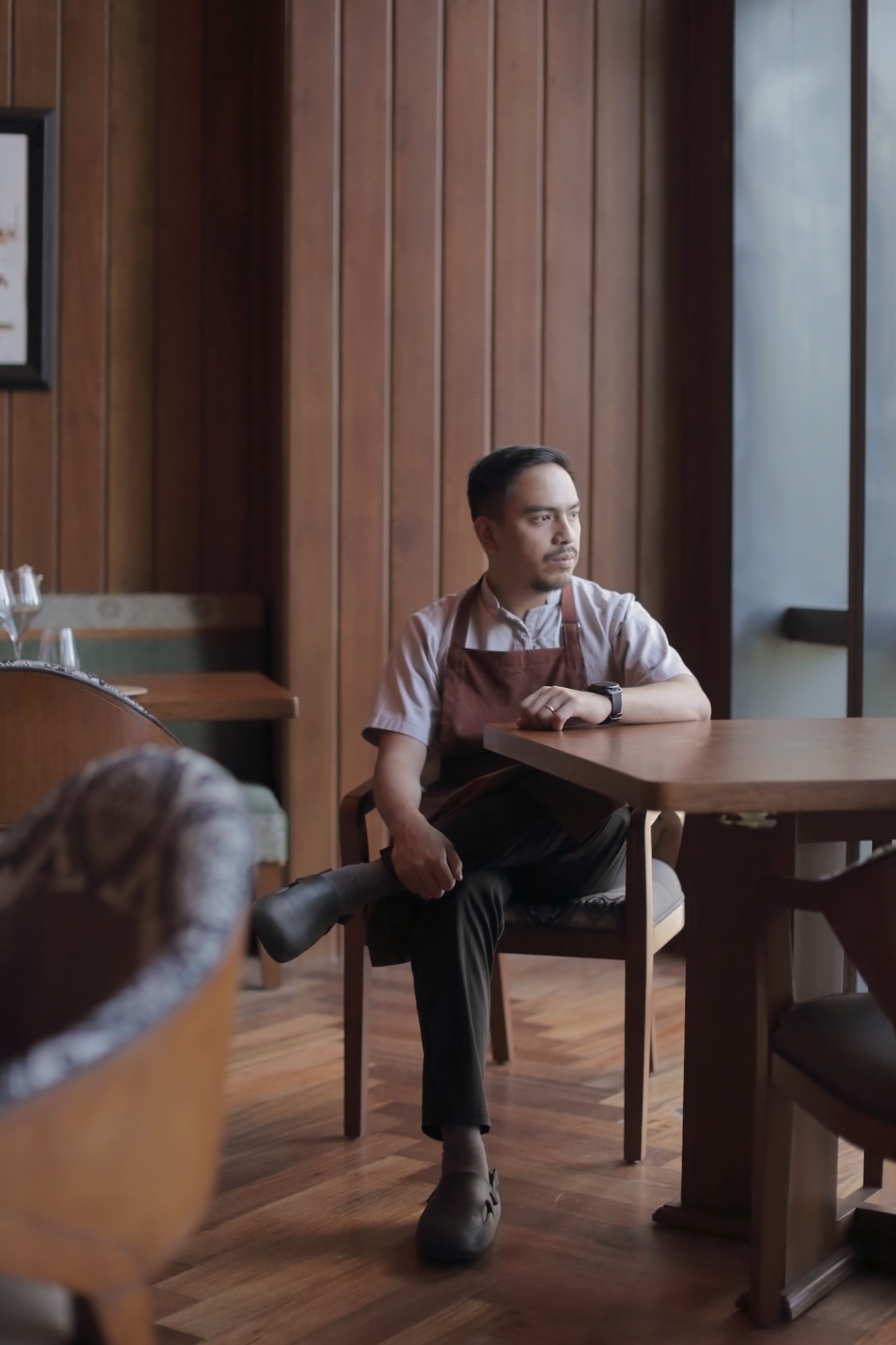
By the time operations manager and sommelier Erin Ganuelas came in in 2022, they were looking for more ways to make the dining experience unique for their patrons. Adding wine pairings to their offerings was one of them.
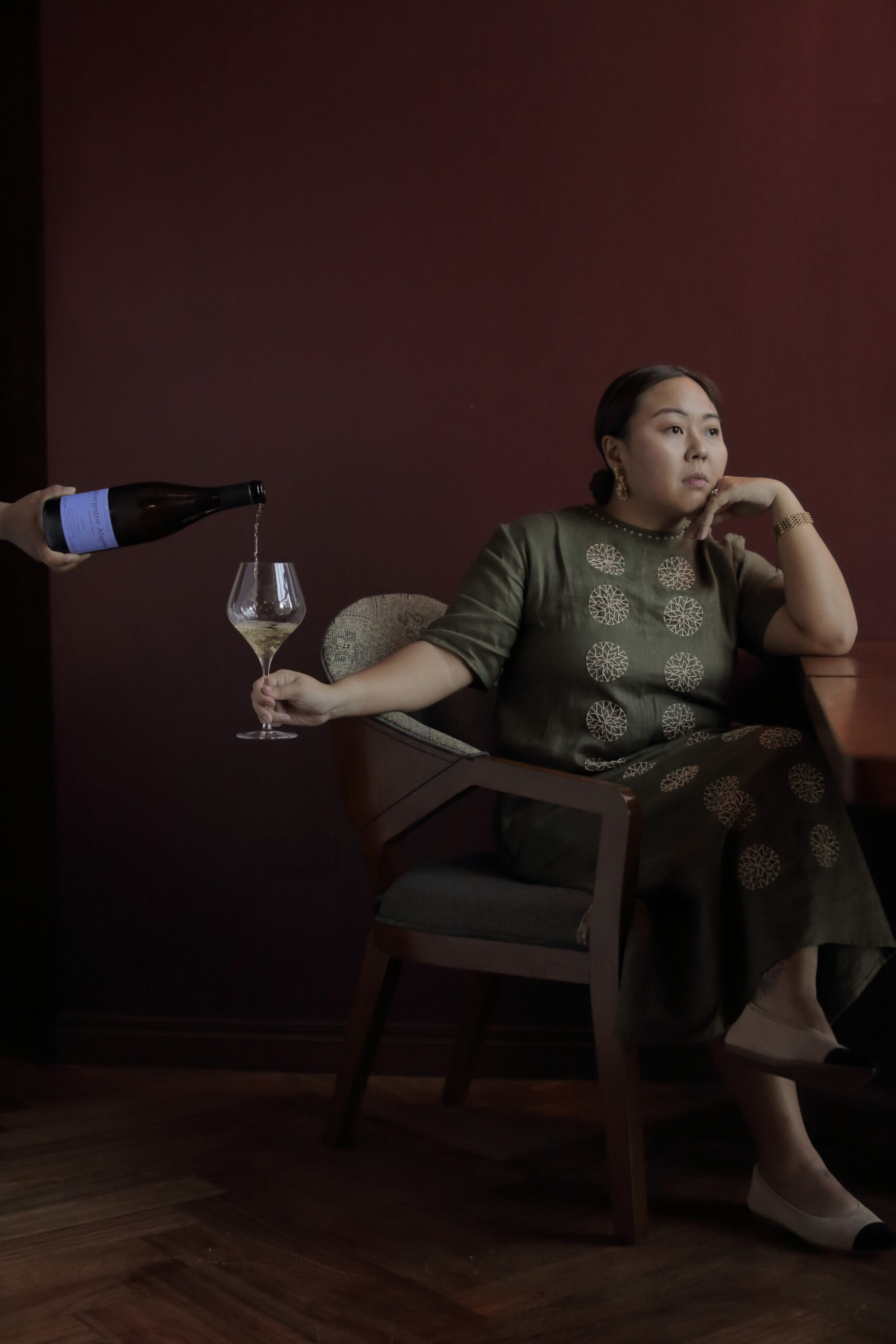
Ganuelas happened to be the perfect somm for the job. “I forced my way in!” remarks Ganuelas, chuckling. Having dined at Hapag a few times previously, the Australia-trained sommelier admired how Navoa and Dolatre were experimenting with Filipino cuisine. “You know, even in Australia, when I would be homesick, I would get pork isaw and have it with a pinot or something,” she recalls.
When she saw their post looking for a sommelier, she sent an application two hours later, even following up with Dolatre via DM when she didn’t get a reply after three days. Navoa eggs her on to share why she DMed Dolatre instead of him.
“I thought he was the more approachable one,” she quips.
An invitation to Hapag and Ayà

Once they secured the deal on the new space, the three got to work in tailoring the experience for their patrons, working backwards from the idea that they wanted to proudly champion Filipino culture.
The idea for the cocktail lounge Ayà came up when they thought of doing small plates paired with locally crafted cocktails. Taken from the word “anyaya,” it is an offshoot of their penchant for gatherings, an invitation to come and eat good food.
“In Ayà, we kind of wanted to really just give off the feeling that you’re being welcomed into our home,” says Ganuelas. “You’re guests, so sit back, relax, and we’ll take care of you and we’ll supply you with food and drinks as you usually do when you enter someone’s home.”
Following this vision, they designed the upper level with a lounge concept, the capiz window-inspired bar shelves lined with liquor bottles and the occasional book and little knick knacks that you’d find in a Filipino home.
“In Ayà, we kind of wanted to really just give off the feeling that you’re being welcomed into our home,” says Erin Ganuelas. “You’re guests, so sit back, relax, and we’ll take care of you and we’ll supply you with food and drinks as you usually do when you enter someone’s home.”
On the lower level, Hapag’s main dining room is punctuated by high ceilings and walls adorned with T’nalak tapestries and works depicting such images as Jose Rizal and life on provincial farms. Best of all, the black-tiled open kitchen has several all-purpose stations and ample space for the kitchen staff to comfortably assemble each dish.
“We wanted to explain to everyone that this place [is] supposed to be a vessel for local artists to showcase their work,” says Navoa while inviting us to observe Aya’s interiors. “For example, tables are all local, the artwork, the plates, cutleries are all local, the jars downstairs where the reception is are all local,” he adds.
Dolatre says that they were extra involved with the process of opening Ayà and Hapag 2.0 because they wanted to make dining at their establishments a well-rounded experience; spaces that tell a story. “I think ’yong goal rin namin for Hapag and Ayà is to touch all senses.”

Restaurants that boast a “sensory experience” bear the danger of being a bit of a hit or miss, but the team is highly committed to their promise, teaming up with musicians and fragrance designer friends to help them with the sound and scent aspects.
“For Hapag, we really just wanted to make sure that it feels like a theatrical experience where the guests are part of the show so you’re really immersed in the experience when you come in,” shares Ganuelas when we ask what makes it different from Ayà.
The tasting menus are accompanied by an instrumental set specially composed by Leanne Mamonong and Zsaris. “We had [them] come to the space and try the food,” says Navoa. The songs are different depending on what phase of the meal you’re on. “So when you ever hear that song, you’ll always remember your experience here. Unlike a normal song that has lyrics [that] will always bring you out of the restaurant. Kunwari may love song and it’s heartbreaking and you hear it while you’re eating, instantly your mind goes somewhere else,” he adds.
Balancing innovation
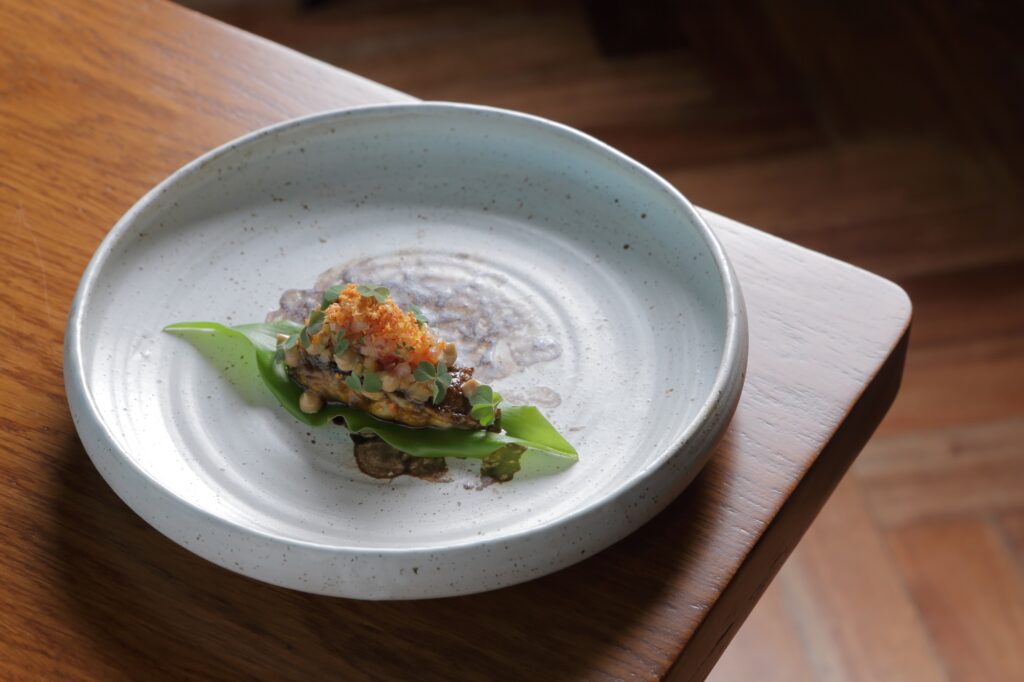
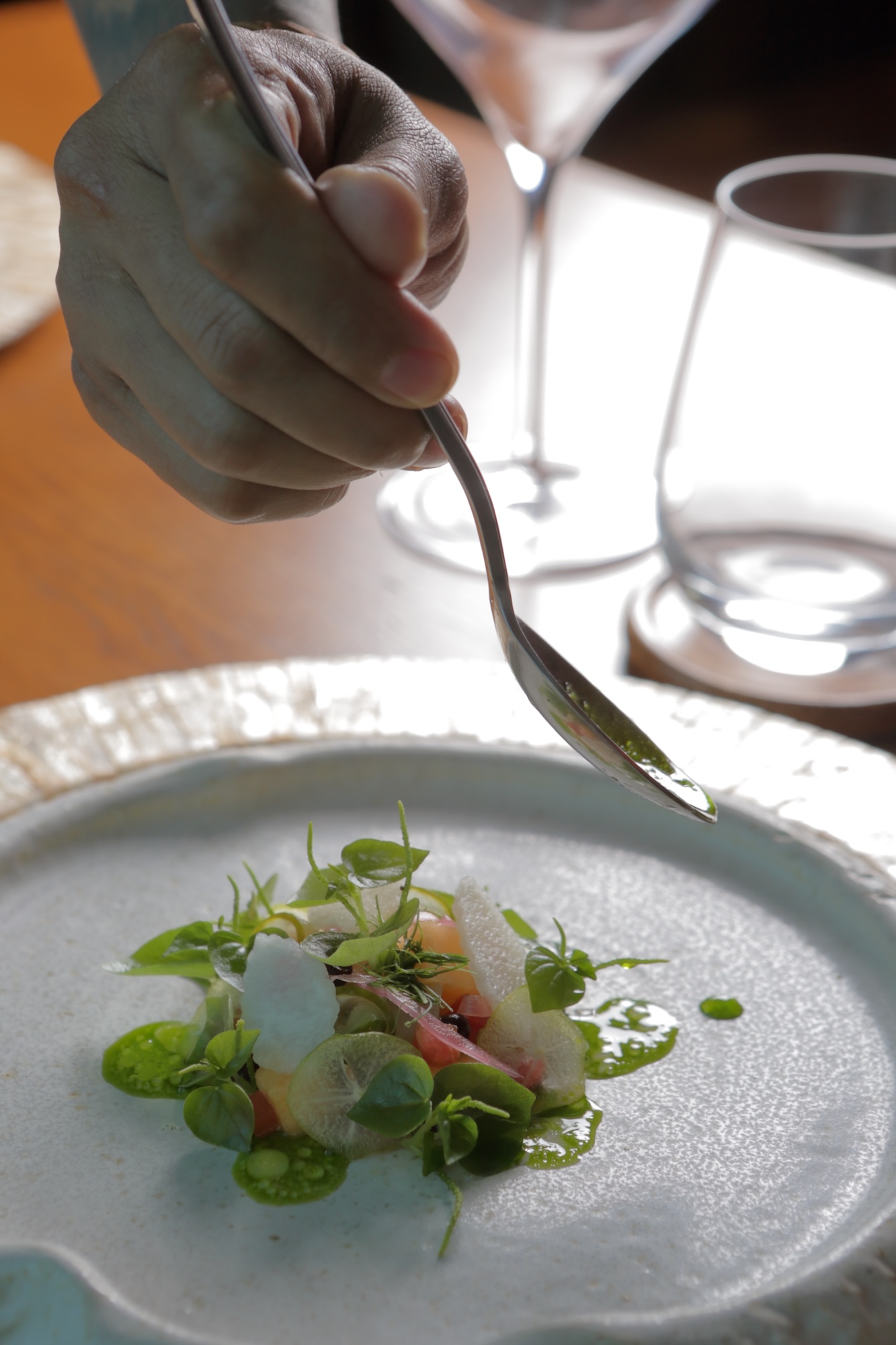
With all of the bells and whistles that come with innovation in a restaurant, there’s always that danger of quite literally getting lost in the sauce. But it’s clear that Dolatre, Navoa, and Ganuelas still very much know their way around the sauce. In fact, as Navoa reminds us, they make their own. “We make our own soy sauce, we make our own vinegar, we make our own misos, we salt ferment a lot of things,” he trails off.
As soon as the conversation heads in the direction of fermentation, the normally stoic chef lights up. He’s read a lot of books, he says, explaining the time it takes to make this and that, though a lot of the process is trial and error. “Are you guys familiar with katsuobushi?” he asks as he goes off about steaming potato substrates and inoculating them with bacteria.
Perhaps this was a teaser for the amount of technical know-how these young chefs have seriously taken to learning—all that to say that they know what they’re doing.
Thirdy Dolatre walks us through Hapag’s first menu in the new space, an ode to traditional Philippine cooking methodologies they’ve aptly titled “Metodolohiya.” The menu includes such dishes as kinilaw, nilaga, inadobo, and kinulta (“the process of cheesemaking, which involves separating the whey from the cheese”).
Dolatre walks us through Hapag’s first menu in the new space, an ode to traditional Philippine cooking methodologies they’ve aptly titled “Metodolohiya.” The menu includes such dishes as kinilaw, nilaga, inadobo, and kinulta (“the process of cheesemaking, which involves separating the whey from the cheese”).
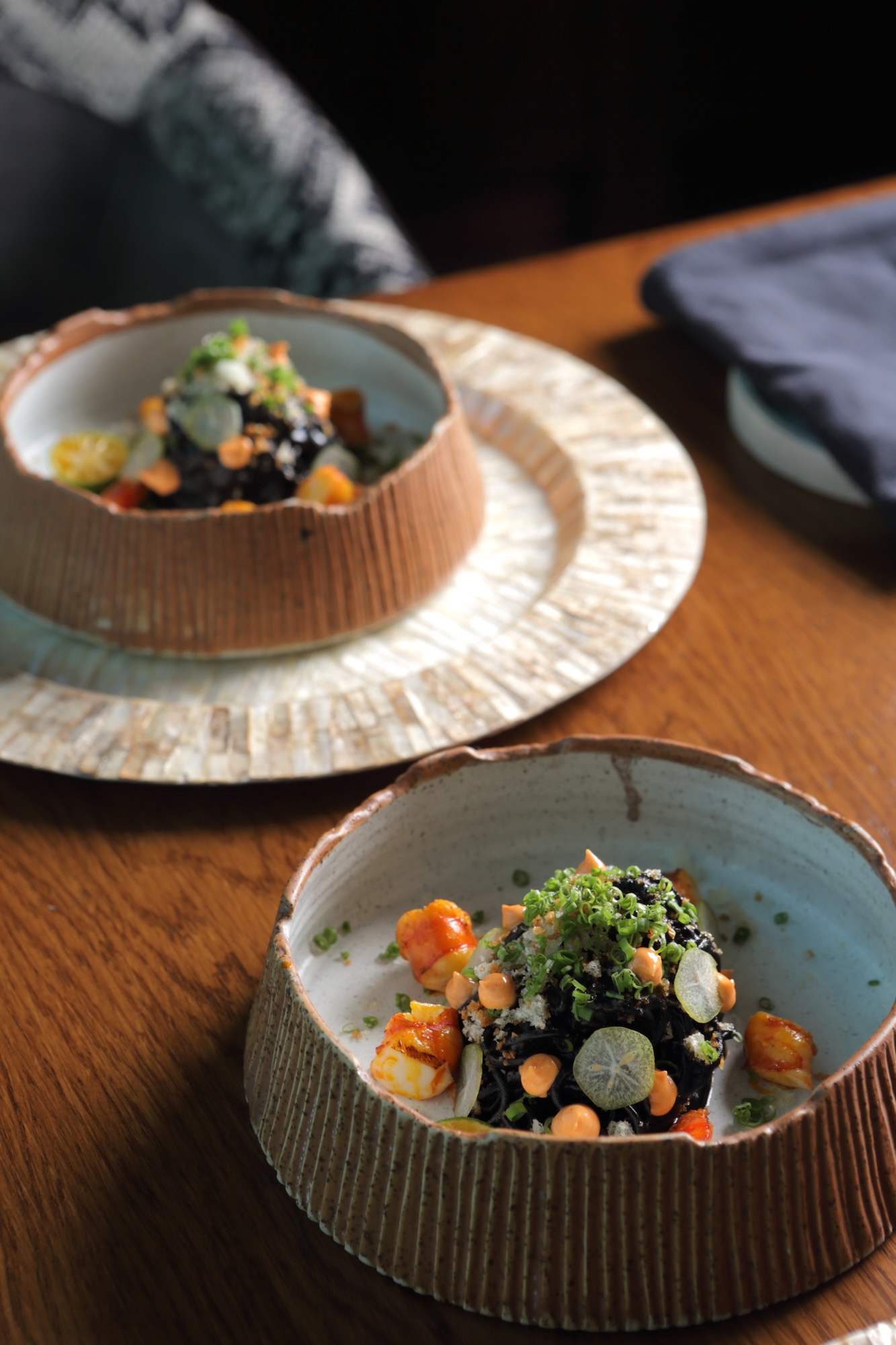
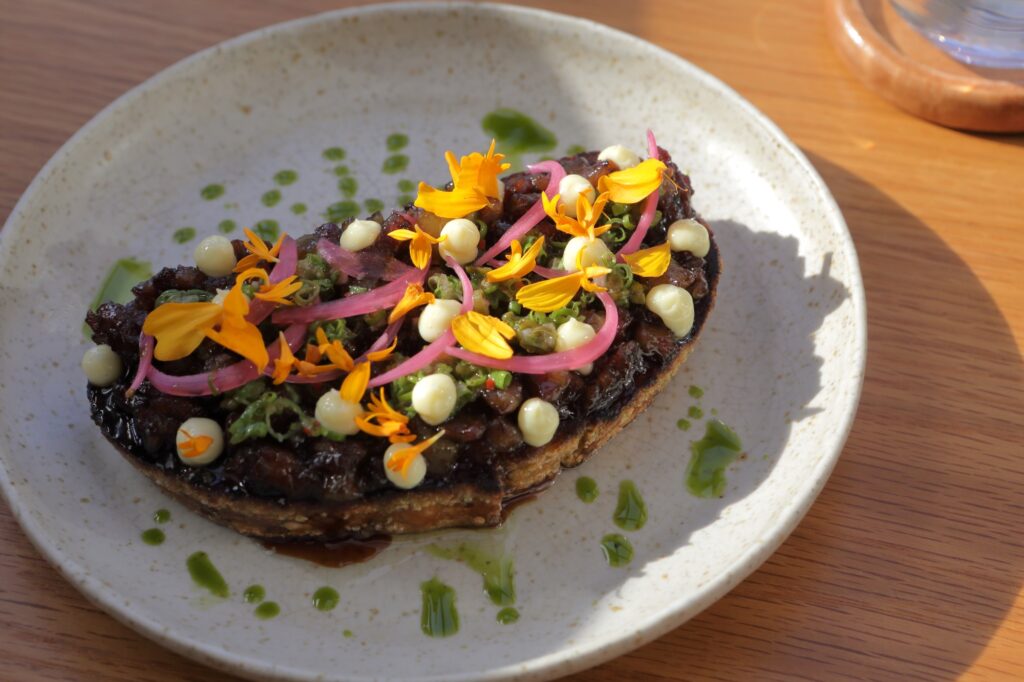

A big twist on tradition comes in the first course, which is the nilaga. It comes with soup and a salsa, a pairing that they figured out after a short visit to Cavite.
“So you know, thing siya where they call it ‘terno-terno tono-tono’? says Dolatre animatedly. “It’s like pairing two foods together. You take the soup and you take the salsa tapos ’yon na ’yong mag o-open ng palate for the entire tasting.”
They justify the addition of the salsa by referencing the galleon trade and how Mexicans gifted Filipinos produce like tomatoes, green chilis, and pumpkins. The dish kicks off their tribute to the methods that serve as the foundation of Filipino cuisine, combining their own techniques for that Hapag flair.
The beating heart

“I think ’yon din ’yong secret ng Hapag—it’s the people talaga,” says Ayà sous chef Athalie Tan. Like Ganuelas, she too sent her application because of Navoa and Dolatre’s goal to make Filipino food known on an international level.
“Everyone treats each other as family,” adds Tan. “Everyone wants to push everyone up and parang healthy competition lang siya and hindi toxic ’yong environment.” A 2021 caption on an official Hapag Facebook post gives further insight to her statement: “All our family’s input plays a vital role into the progression of Hapag as one unit, one beating heart.”
From a team of seven in Katipunan, they are now a team of 40, with 20 of them being chefs. And Navoa, Dolatre, and Ganuelas know better than anyone that the well-being of their staff is still a major priority. The grueling hours in the kitchen are no joke, so they really encourage everyone to stay healthy.
“I think ’yon din ’yong secret ng Hapag—it’s the people talaga,” says Ayà sous chef Athalie Tan. ““Everyone treats each other as family,” adds Tan. “Everyone wants to push everyone up.”
“I think, honestly, we really stress with everyone on the team that in order to work more efficiently, health is the most important thing. So, physical and mental well-being,” adds Ganuelas.
Navoa shares that he himself has been on a diet for three years, even asking the staff to just cook chicken breast and some rice for his family meals. We point out that that’s quite funny, given that the three of them work at a restaurant that’s earned coveted spots on several “Best Restaurant” lists.
“We’ve had a few kids come to our doors and say that their life changed working with us,” says Kevin Navoa with an air of reflection. “So, now we’re just taking that all to heart and making sure that we just keep inspiring people over and over again. And maybe, eventually spark the brain or the mind of this person that eventually will just keep this whole thing going.”
“Because if we don’t do it, we’re just going to get bigger and it’s going to be bad for our knees. You can’t sustain the work. We’re not going to be mentally sane,” reasons Navoa.
While health is a number one priority, getting to know their staff over the years has also unlocked a perspective in Dolatre and Navoa that they definitely did not have as chefs just dipping their toes in the local culinary scene. It’s one that looks to the future.
“We’ve had a few kids come to our doors and say that their life changed working with us,” says Navoa with an air of reflection. “So, now we’re just taking that all to heart and making sure that we just keep inspiring people over and over again. And maybe, eventually spark the brain or the mind of this person that eventually will just keep this whole thing going.”
